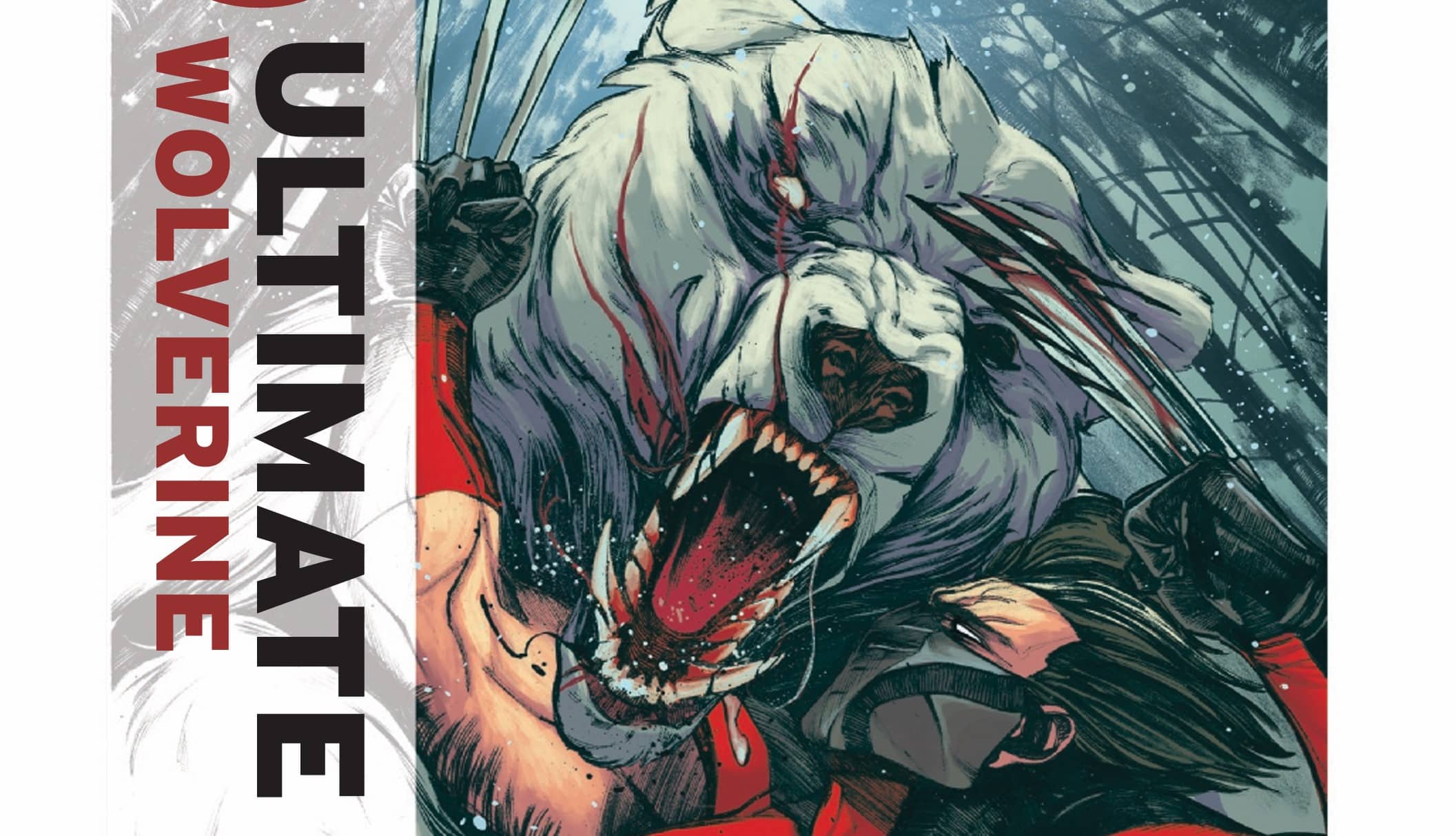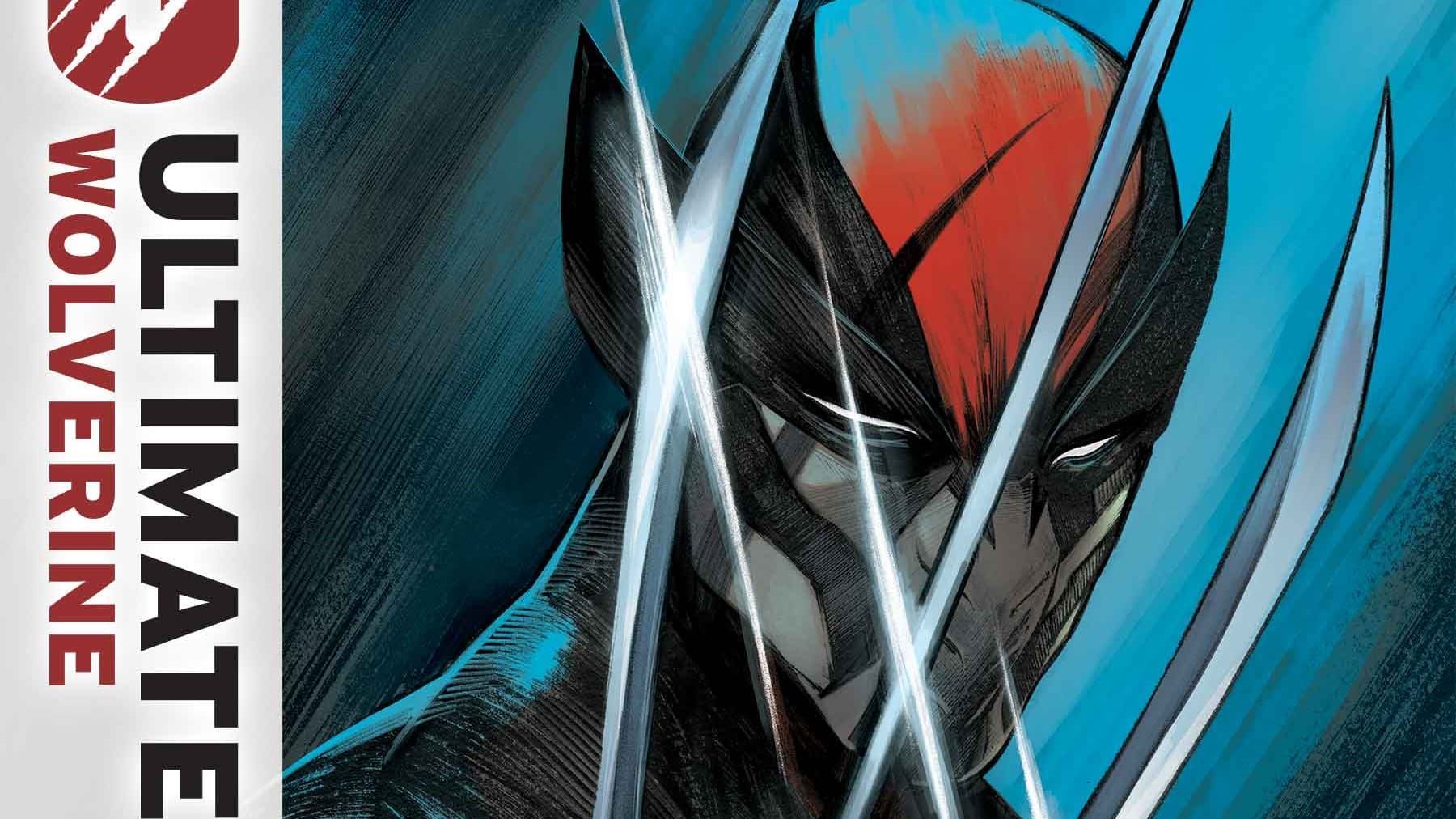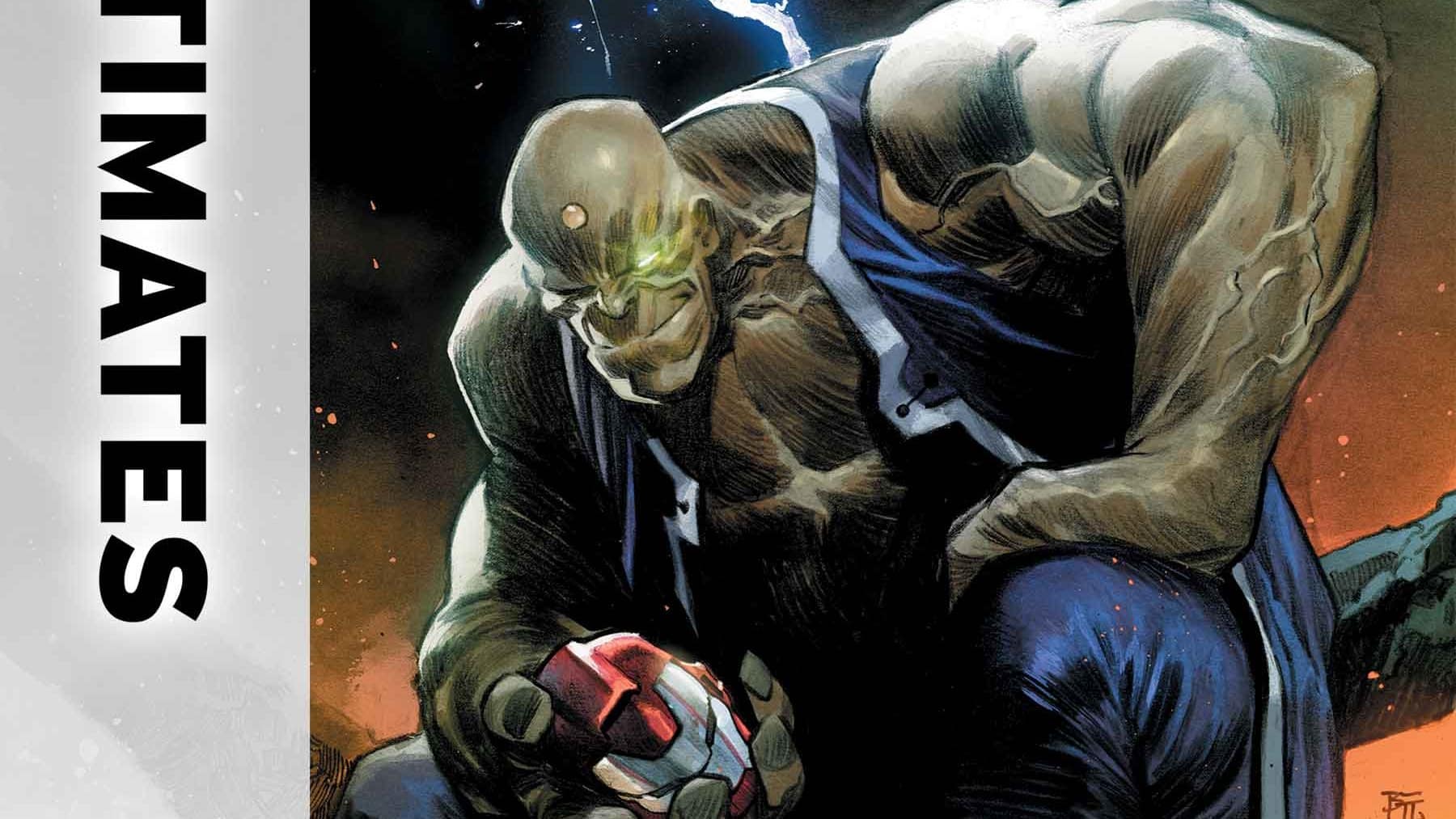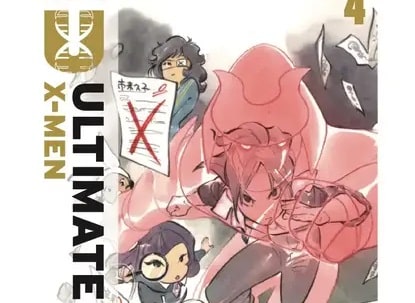Head’s up: This essay includes spoilers for this week’s Ultimates #4 by Deniz Camp, Phil Noto and Travis Lanham.
The Ultimates is a future classic.
If Marvel’s founding creative principle is depicting “the world outside your window,” then Deniz Camp and Juan Frigeri’s run is observing this mission statement better than any other comic being published by the entertainment megacorp right now. And look, all of the basic ingredients are here: Cap, Iron Man, Thor, Ant-Man, The Wasp. The Avengers! But anyone who’s read the four issues of this series so far knows this isn’t a cookie-cutter Marvel product. This comic feels not just very “un-Marvel,” but what Marvel could be if it was more willing to take risks and put its properties in the hands of ambitious creatives with the reins off more often.
The fixtures and fittings look the same, but they function very differently. Doctor Doom is Reed Richards, Tony Stark is Iron Lad, Hank Pym is a piece of shit (OK, some things never change). Hey, this is all very cool, but ultimately these kinds of changes are just part and parcel of any decent alternate universe. “There’s nothing as weird here as whatever was going on between the Maximoffs in the original!” I hear you scream.
Variations in character backstories, motivations and contexts are crucial to any AU story, but, although it does it very well, this isn’t what makes The Ultimates special. It’s the unflinching, eyes-wide-open look at the world outside our window, in all its complex, confounding, catastrophic chaos. The 6160 universe is, as ours is, framed by post-colonial power structures. It’s shaped by its Maker, and the world he’s made, and the superheroes this world has made. That can work both ways: Janet van Dyne’s thoughtless murder of a goon in issue #1 suggests she is the product of a wildly different universal moral framework, while She-Hulk’s origin as a Pacific Islander who is poisoned as a result of the reckless greed of colonial powers is a troubling mirror of real-world events. Perhaps this world is not so different from our own then, and therein lies the mastery of this series so far.
It’s built from a solid start in issue #1, which saw the forming of the team and the commencement of the mission to undo the Maker’s deeds before he returns from time in prison in 18 months, to spectacular issues that build the world by shifting the focus onto different aspects. Frigeri’s art has gone from strength to strength as he’s been able to show off his versatility, an opportunity afforded by the sprawling nature of the narrative.
The second issue saw Captain America dealing with a postmodern identity crisis after waking up to a world in which there is no America for him to skipper. That doesn’t stop Camp from using the new political dystopia of NAURS (the North Atlantic Union and Regional Subsidiaries) to hold up a mirror of American colonialism in a razor-sharp piece of historical and cultural criticism.
The third issue (the She-Hulk issue) is even better. Camp deserves enormous credit for using a superhero framework to tell such a devastatingly simple story about the consequences of the predation and cruelty of global superpowers’ never-ending quest for hegemony on the natural environment and Indigenous populations.
And then we have this week’s issue #4.
A journey into catastrophe

With The Ultimates #4, Camp turns his attention toward the painful history of Doom, aka Reed Richards, and the Fantastic Four in a haunting variation to their origin story. Where previous issues were focused on the macro, the narrative lens is very much turned inward here. It’s a crushingly poignant character study that is yet another testament to the sheer versatility of Camp’s writing.
Supporting this tonal shift is a change in artist. Camp is joined by superstar Phil Noto, who is perfect for this issue. There’s a clean, elegant simplicity to his work that manages to carry the emotional weight of the story, despite the restriction of Doom’s mask. He pulls this off brilliantly, using expert staging and expressive body language to convey the pain and lament that runs through this story.
The plot is relatively straightforward but is worth outlining because the devil is in the variation of detail. Here’s the chronological version: The ambitious scientist Reed Richards prepares for a nine-person mission to space to study cosmic storms. Despite warnings from his backers, who highlight budgetary issues and safety concerns, Reed cajoles three others to join him on a mission that ends in tragic calamity. Rather than heed the call to heroism, his girlfriend Sue Storm, her brother Johnny Storm and his college roommate and friend Ben Grimm all die either as a direct or indirect consequence of the accident. Disgraced and guilt-ridden, Reed is eventually kidnapped by The Maker, his multiversal counterpart, who not only forces him to work for his genocidal cause but tortures him, destroying his body before encasing it in a metallic husk.
In the present, Reed has ostensibly abandoned his attempts to atone by travelling back to the past and changing events using the “Immortus Engine” that he and Tony Stark, aka Iron Lad, agreed to stop using. Acquiescing to playing by the rules, or so it would appear, he is now attempting to bring back the Fantastic Four by experimenting on mice, giving them the FF’s powers. This means bringing back the FF in a spiritual sense, augmenting others to fill the void in the universe left by them. Should these experiments continue to fail, you couldn’t rule out further attempts to change the past. The catastrophic consequences of this attempt at penance would be fascinating.
Mr. Not Doing So Fantastic

Where some AU stories are interested in exploring the “cause” of variance, like a change in origin story, The Ultimates #4 works because it focuses on the effect. It moves beyond being a Wiki page point of interest to a poignant character study that will stand the test of time because it provides not just an insight into this Reed, but the Mr. Fantastic who graced our pages for the first time back in June of 1961.
Camp and Noto achieve this by playing on the audience’s knowledge of the Fantastic Four’s history, which causes the reader to grieve for the decades of in-universe history that will now no longer happen. The scenes of Reed mournfully touching the screen as he watches his loved ones pass away is as heart-wrenching as seeing him fall speechless at meeting Sue Storm for the first time, or talking to Ben about his dreams of emulating his father or Johnny’s innocence in joining the mission just because his sister did. The resonance of the issue is enhanced by readers’ emotional connection to the FF, by their knowledge of these branches of destiny cut off at the root, but it’s not reliant on it. The four-panel structure that repeats across each and every page, divided into two flashback panels and two present-day panels, makes Reed an observer to his own hubris, guilt and trauma at the same time as the reader. He clutches the monitor as if to try to change the events he’s watching. Whether it’s Johnny going up in flames, Sue slipping away in a hospital bed or Ben at the bottom of a quarry having taken his life unable to deal with the life-changing effects of the trip, he is powerless and must live with the guilt. The chasm between Reed and the life he should have had is tragic.
Even more tragic is the way in which The Maker plays on this guilt for no purpose other than to break Reed. The “extreme despair” Doom feels is exacerbated by the physical and emotional torture inflicted on him by The Maker. I find it interesting that Camp resists the simple binary between Reed and Doom, which is characterized by the idea that their lives are two divergent paths. In this context, it’s The Maker who forces him into a role, who traps his trauma and guilt and sadness in a metal frame, to be eaten from within; to be defined by his mistake. To be Doom.
We don’t know what Reed would have become without The Maker’s intervention, because Reed’s recounting of his own history omits this period. However, the outcome is clear: the establishment of the fundamental axis on which Reed Richards and Victor Von Doom exist. Both are geniuses almost beyond compare, but the former is a product of love, the other of pain and trauma. It’s as if, as Reed-Doom says himself in the issue, he is “oppositely charged.”
Nothing in this world happens without The Maker. He is the cause, everything else is the effect: a world in which superheroes kill without remorse, in which empire has returned in the form of a corporation, in which Indigenous populations are poisoned and nature is destroyed; in which the Marvel Universe’s first family, and the hope they represent, was snuffed out before their time. Therein lies the thematic throughline that holds the series together, what makes it so tragic and compelling and real.
I mean, have you looked outside your window lately?
Buy The Ultimates #4 here. (Disclaimer: As an Amazon Associate, ComicsXF may earn from qualifying purchases.)
Jake Murray spends far too much time wondering if the New Mutants are OK. When he's not doing that, he can be found talking and writing about comics with anyone who will listen. Follow him @stealthisplanet.bsky.social.






